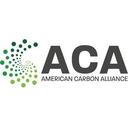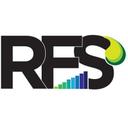Policy
Members of the European Parliament (MEPs) on Sept. 13 approved a new law that ramps up requirements for sustainable aviation fuel (SAF) within the European Union but sets limits on what types of feedstocks that fuel can be made from.
The USDA on Aug. 30 awarded $266 million to 1,334 renewable energy and energy efficiency projects under the Rural Energy for America Program. Two of the awards will support projects at biodiesel plants.
Iowa Secretary of Agriculture Mike Naig is encouraging Iowa fuel retailers to apply for cost-share grants through the Iowa Renewable Fuels Infrastructure Program to upgrade fueling systems and provide consumers with greater access to higher biofuel blends.
Iowa Secretary of Agriculture Mike Naig is encouraging Iowa fuel retailers to apply for cost-share grants through the Iowa Renewable Fuels Infrastructure Program to upgrade fueling systems and increase access to higher biofuel blends.
Growth Energy filed briefs to intervene in three cases in late August in support of the U.S. EPA and its decisions to deny SREs for refiners seeking to avoid complying with their blending obligations under the RFS.
ACE’s 36th annual conference featured a panel of tax experts that explained enhancements to Sections 45, 45Q, 45V, 48 and the new Section 45Z of the Internal Revenue Code, and share insights on how to maximize on these incentives.
Minnesota Department of Agriculture Commissioner Thom Petersen is encouraging the federal government to allow the U.S. DOE's GREET model to be used to calculate GHG reductions for the purposes of the SAF tax credit.
A major farm show and state fair this week in two Midwest states will provide the backdrop for the Renewable Fuels Association’s latest push to see American-made, lower-carbon ethanol supported as a feedstock for sustainable aviation fuel (SAF).
In a letter on Aug. 24 to U.S. EPA Administrator Michael Regan, the RFA blasted EPA’s Science Advisory Board for its recent report making “specious” and unfounded claims about corn ethanol’s impact on greenhouse gas emissions.
California hit an important milestone in its shift away from polluting fuel sources, with clean fuels replacing over 50 percent of the diesel used in the state in the first quarter of 2023, according to the California Air Resources Board.
The American Carbon Alliance on Aug. 23 sent a letter to Internal Revenue Service Commissioner Danny Werfel urging the U.S. Treasury Department to adopt the U.S. Department of Energy’s GREET model to calculate the GHG emissions impacts of SAF.
Reps. Jasmine Crockett, D-Texas, and Max Miller, R-Ohio, on Aug. 18 introduced the Farm to Fuselage Act, legislation that aims to update the Farm Bill to facilitate increased domestic production of sustainable aviation fuel (SAF).
Growth Energy filed a motion to intervene in the U.S. Court of Appeals for the Eleventh Circuit in response to the Hunt Refining Company’s lawsuit seeking to reverse the U.S. EPA’s decision to reject unwarranted SREs.
The U.S. EPA’s Science Advisory Board is scheduled to discuss draft commentary on the agency’s recently finalized Renewable Fuel Standard “set” rule during a public meeting scheduled to be held Sept. 21-22 in Washington, D.C.
The U.S. EPA's Science Advisory Board is scheduled to discuss draft commentary on the agency's recently finalized Renewable Fuel Standard “set� rule during a public meeting scheduled to be held Sept. 21-22 in Washington, D.C.
More than 1.98 billion RINs were generated under the RFS in July, up from 1.71 billion generated during the same month of last year. Total RIN generation for the first seven months of 2023 reached 13.4 billion.
EPA: No new SREs filed under the RFS
The U.S. EPA published updated small refinery exemption (SRE) data on Aug. 17, reporting that no new SRE petitions have been filed under the Renewable Fuel Standard in the past month. Only two SRE petitions remain pending.
The U.S. EPA published updated small refinery exemption (SRE) data on Aug. 17, reporting that no new SRE petitions have been filed under the Renewable Fuel Standard in the past month. Only two SRE petitions remain pending.
The European Union on Aug. 17 opened an investigation into whether Indonesia has circumvented EU countervailing duties on imports of biodiesel originating in the country by routing the fuel through China and the U.K.
The Surface Transportation Board is soliciting nominations to fill six vacancies on its Rail Energy Transportation Advisory Committee. One of those vacancies is to be filled by a biofuel producer or feedstock provider.
Growth Energy filed a motion to intervene in the U.S. Court of Appeals for the District of Columbia Circuit in Center for Biological Diversity (CBD) v. EPA et al. (Case No. 23-1277). CBD is challenging the EPA’s RFS “set” rule.
On the first anniversary of the IRA becoming law, the RFA released a new inventory of announcements, press releases, and news articles regarding investments RFA members are making to reduce the CI of the renewable fuels and bioproducts they produce.
Growth Energy marked the one-year anniversary of the Inflation Reduction Act by releasing new data on the economic, employment, and agriculture market potential of the bill’s Section 45Z clean fuel production tax credit.
The U.S. Department of Energy’s Bioenergy Technologies Office has awarded $2.5 million in funding to four projects that aim to advance lab-developed clean bioenergy technologies towards commercialization.
The U.S. EPA has announced it will hold a public webinar on Sept. 7 to discuss the implementation of new regulatory provisions included in the final Renewable Fuel Standard “set” rule, which was released on June 21.
ACE on Aug. 14 called on U.S. President Joe Biden to ensure the U.S. EPA promptly finalizes its proposed regulation to eliminate the 1-psi Reid RVP waiver for gasoline containing 10 percent ethanol in eight states.
The U.S. EPA has announced it will hold a public webinar on Sept. 7 to discuss the implementation of new regulatory provisions included in the final Renewable Fuel Standard “set� rule, which was released on June 21.
Growth Energy CEO Emily Skor discusses the importance of using the GREET model to calculate the lifecycle analysis of SAF in the U.S. and debunks claims by the anti-agriculture crowd that renewable fuels will promote “clearing land to grow crops.”
In a letter sent Aug. 1 to U.S. EPA Administrator Michael Regan, the RFA urged the agency to quickly finalize its regulations accepting the petition of eight Midwest governors that would allow summertime sales E15 in their states.
Sens. Amy Klobuchar, D-Minn., and Pete Ricketts, R-Neb., on July 27 introduced the Flex Fuel Fairness Act, a bill that aims to provide meaningful incentives for automakers to manufacture FFVs in addition to battery electric vehicles.
Advertisement
Advertisement

































